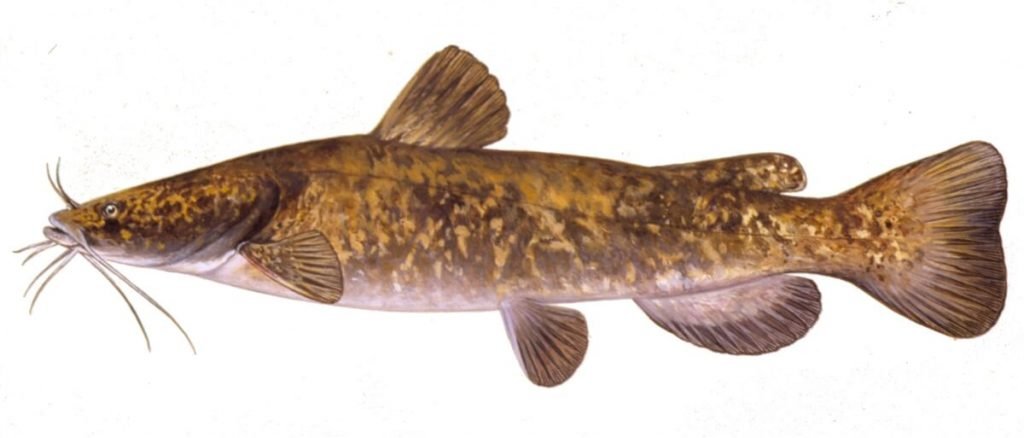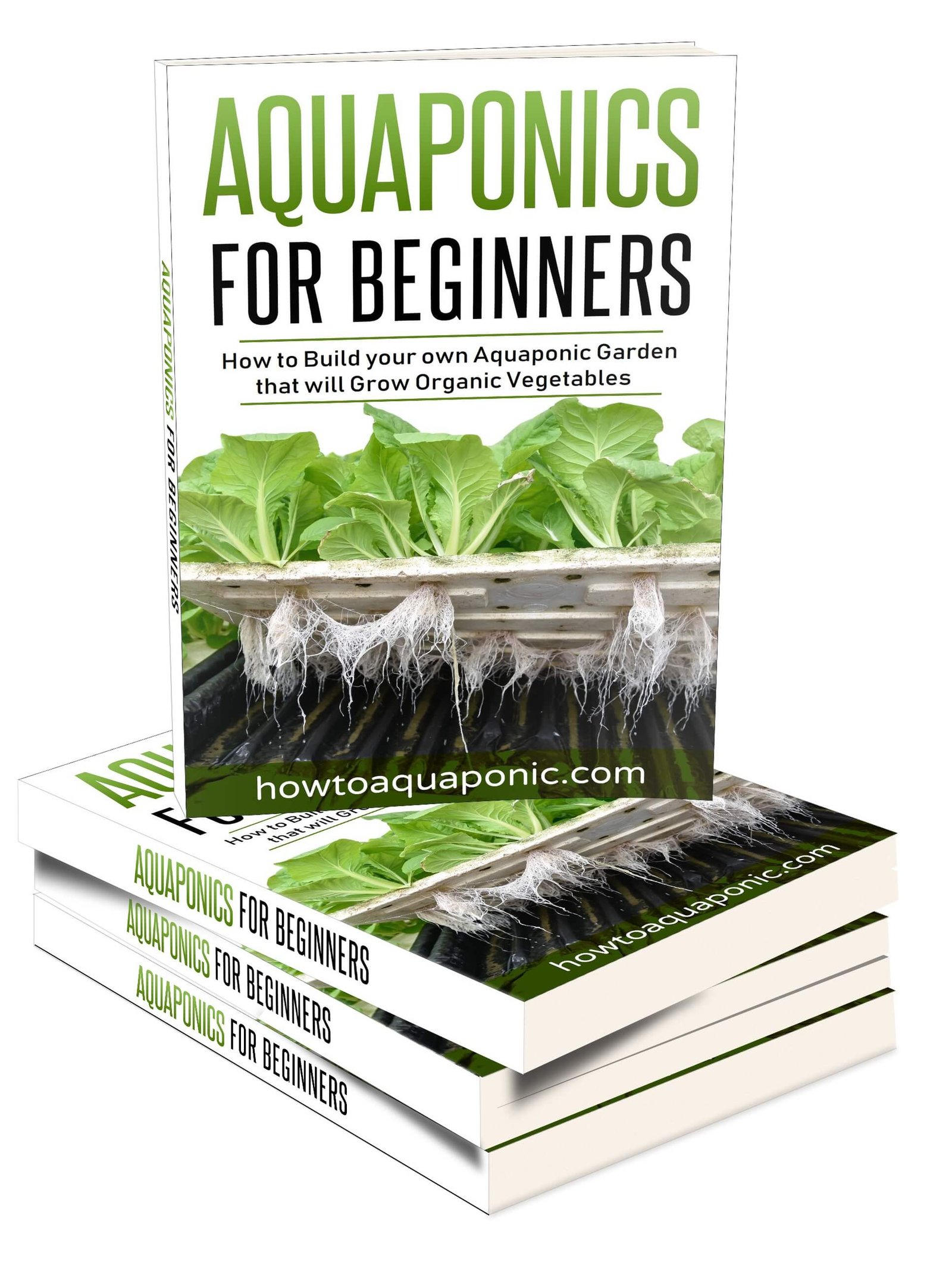Aquaponics involves the growing of fish and plants together in an integrated system. Catfish aquaponics involves using channel catfish because they are a tolerant catfish species.
In theory, any fish should be able to survive in an aquaponics system. However, the catfish is an exceptionally good choice as they are surprisingly tough. In essence, this means they can cope with a large variation in water temperature. This is important when you are starting your aquaponics system as you may find it difficult to get all the necessary elements balanced properly at the start.
The catfish is very forgiving in this sense. It is also not a territorial fish that will reduce the chance of them fighting in your tank.

In an aquaponic system, the fish waste acts as a source of nutrients for the plants. This is done via two types of bacteria which turn the ammonia in fish waste into nitrites and then nitrates. The plants absorb these nitrates, effectively cleaning the water for the fish.
In aquaponics, catfish are among one of the many types of fish one can grow. Since some fish are hardier than others it is important to choose the type of fish that will adapt well to your aquaponic system. In fact, there are several advantages to using catfish in aquaponics.
The ideal temperature for catfish in aquaponics is about 65F to 90F. It is worth noting that colder temperatures can slow down metabolism and food consumption; this will lower the nutrients available for your plants; reducing the effectiveness of your catfish aquaponics system. A warm surrounding improves the fish and plant growth. However, catfish are generally hardy fish and can survive in most climates.
 I have written a book that contains all the information you need to get started with aquaponics.
I have written a book that contains all the information you need to get started with aquaponics.
Don’t be the person that makes painful mistakes during your first aquaponics build!
It has 265 pages filled with information about aquaponics. It’s available in paperback or eBook format.
You can buy it here on Amazon.com
Catfish Stocking Density
Asking how many catfish per gallon of water is an important question; too few and you’ll not have enough nutrients for your plants. Too many and the bacteria won’t be able to clean the water; potentially making your catfish die of too much ammonia.
That’s why you need to get the stocking levels right.
The recommended stocking density would be one pound of fish per eight gallons of water. This is to reduce stress and give them more oxygen. As the system ages and the nitrifying bacteria become stronger, the amount of water can be exceeded. Catfish grow faster in the first breeding years than as they mature. Most fish will take about two years to fully mature. The ideal oxygen levels for the catfish would be four to five ppm(parts per million). Dense tanks may need aeration at night since plants absorb oxygen at this time and may choke the fish. Extra aeration may also be required when temperatures go above 85F.
Handling Channel Catfish
There are actually several different types of catfish but one of the best options is channel catfish. This is because they are tolerant of cold water and can live with crappie, tilapia, and koi.
You should check your local farms for channel catfish. They will have a breed that should flourish in your local climate which will make it easier to establish your catfish aquaponics system.
It is worth noting that Channel catfish will generally grow very fast in your system. In fact, the catfish growth rate should ensure they are approximately 3 pounds in just 12 months. [1] That’s an impressive growth rate and one that should ensure you have a plentiful supply of these fish.
Your only input with catfish aquaponics, as with any aquaponics system; is fish food. You can simply give them fish food pellets that are designed for catfish; you’ll have to choose between organic or not.
In general, it is advisable to give your catfish 2.5% of their body weight in feed. Of course, you can’t weigh all of them but you can estimate this.
For example, if you have 50 mature catfish you can assume they are all between 2 and 3 pounds. If you take the average as 2.5 pounds then the total weight is 125 pounds. 2.5% of this is 3.125 pounds of food per day.
You’ll then have to monitor to see if there is excess food floating or settling to the bottom of your tank; which shows you’re giving them too much. If you’re not giving them enough then they may be very eager to eat when you feed them or they may swim in parts of your tank you don’t usually see them in.
If either of these things happens you’ll need to adjust your food a little until you have a perfect balance.
However, you can also give them worms and insects; such as black soldier flies, crickets and even wingless flies. But, you want to minimize any dirt entering your aquaponics system when feeding them insects and worms.
Alternatively, you can grow aquaponics plants such as duckweed, water lettuce, and algae. These will help to give your catfish a balanced diet but they can spread into parts of the system where you don’t want them to be.
The balance is to ensure that the food you give them will allow your catfish a varied and healthy diet while promoting the production of ammonia for your plants.
Finally, it is also important to note that catfish are not scaly like so many fish. This means you need to know how to handle catfish properly.
A good starting point is to avoid using nets unless you have to; they will get scratched with the small knots rubbing on their skin. It is also important to note that their skin is sensitive; avoid handling them unless absolutely necessary.
A good way to move them is with a silicon net; this is soft and has no holes to snag them with.
Tanks for Catfish
The first thing to note when keeping catfish is that you need a large tank. The mere fact that you need 8 gallons of water per fish tells you that you’re going to need a large tank; unless you only want to keep one or two catfish and have a small grow bed.
The better the aeration, filtration, and water flow the happier your catfish will be. In short, you need to be prepared to go large.
15 pounds of fish (5 grown fish) would require at least 120 gallons of water. If you’re unsure then here is the math:
A full-grown catfish will be 2 – 3 pounds. This means 5 catfish will be a maximum of 15 pounds.
Catfish like to have temperatures between 75 and 85) Fahrenheit. They are fairly tolerant of the pH level; accepting anything between 7 and 8; this makes them a good fish for beginners or experts.
How To Clean Catfish For Eating
One of the greatest things about catfish aquaponics is that they are a delicious fish to eat. They actually have a very mild flavor and generally adopt the flavor of the food they are cooked with.
You can cook them in a multitude of different ways. You don’t even have to worry about overcooking them; they will just become a little dense.
However, it is important to adopt the right approach to cleaning them after you’ve used your silicon net to scoop them out of the tank. Of course, you don’t need to use the silicon net if you’re going to eat the fish because you’ll be unconcerned about damaging them. The silicon net is designed for when you need to catch the fish for inspection or any other reason; before releasing them back into the tank.
Before you can gut and cook your catfish you’ll need to clean them. Instead of scales, they have slime over their body to protect them while in the water. The easiest way to remove this is to lay your fish on a board and wash it thoroughly with salt. This simply means rubbing coarse salt all over it with your hands. The salt will break the slime down. [3]
You can then rinse the fish. Check it thoroughly and re-salt if necessary to ensure all the slime is removed
Pros Of Catfish Aquaponics
There are several good reasons to start catfish aquaponics today:
- Fast growth rate
I’ve already mentioned that a catfish will grow to be between 2 and 3 pounds in just one year. That’s a fast growth rate for any fish. Of course, you’ll have designed your aquaponics catfish system round the stock level of a full tank of adult catfish.
You also need to be aware that a mature catfish can spawn as many as 9 times in a season. The eggs will hatch within 10 days; they will then start growing.
Assuming you stock your tank with 30 catfish, within 18 months you can have double that number or more. Your catfish aquaponics system doesn’t have any predators for the catfish to worry about; leaving them free to breed.
As you are not interested in breeding your catfish it is important to monitor them regularly to ensure breeding is not occurring. It can be hard to sex the species; you may find that you have male and female catfish present.
- Taste
The catfish has a mild taste which makes it perfect as an addition to virtually any dish. This is why it is seen as a desirable fish and even a delicacy in some places.
Cons Of Catfish Aquaponics
- Stress
Catfish have no scales and are easily stressed or even injured when handled; particularly if you hold them too tightly. In reality, you shouldn’t need to handle your fish very often. However, if you do it is essential that you use the appropriate caution and procedures, as already mentioned.
- Hardiness
The catfish is relatively hardy but if you are new to aquaponics it may be better to opt for tilapia. These are generally hardier and grow just a little faster than catfish.
Although you can look after catfish as a newcomer to the aquaponics scene it is generally considered the second notch on your belt; after you’ve mastered tilapia.
Things to keep in mind when using catfish for aquaponics
Catfish are generally very hardy which gives you a limited amount of leeway when first establishing your system. They will tolerate a fairly broad range of conditions while you establish the system properly.
However, tilapia is even more resilient than catfish; which is why they may be the better choice for anyone just starting out in aquaponics.
However, if you have little experience or are feeling a little adventurous then catfish is an excellent second step into the world of aquaponics. You will need a large tank to look after your fish but this does mean that you can have a large grow bed; potentially increasing your plant yield.
The real secret is to do the research before you build your aquaponics system; then build the fish and plant levels slowly until you are happy that everything is functioning correctly. Just don’t forget to have fun on the way!

Nick loves building, managing and giving others advice on aquaponics. He created this website to do just that. He is the author of Aquaponics for beginners. If you got a question contact him here or read more on the about page here.
